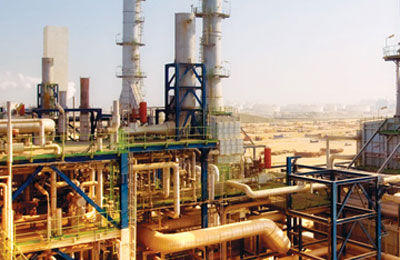
Gas-to-liquid: Fuelling the future
Doha, January 2, 2013
Pierre Eugene Berthelot may have sparked a controversy or two in the 19th century because of his views on abiosis – the state of non-viability – but his position that coal could be converted into an oil-like product went on to instigate new technologies so potent, they can fuel our future for decades to come.
Today, our ability to transform solids and gases into liquids from the depths of fjords to wadis has opened new gateways of opportunity. As worldwide levels of readily available crude oil dip and new sources of gas – a cleaner and more efficient hydrocarbon – are explored, advancement in technology to steam gases into liquids could not have come at the right moment for an industry on the brink of fast-depleting conventional resources and a rising investment in alternative energy.
At the heart of this great industry success story lays the innovation by two German scientists, Franz Fischer and Hans Tropsch. Working at the Kaiser-Wilhelm-Institut for Chemistry in Berlin in 1922, the duo developed the eponymous Fischer-Tropsch process, a series of chemical reactions that converts carbon monoxide and hydrogen into liquid hydrocarbons.
LIQUID POTENTIAL
In 1935, the first industrial-scale production of coal to oil, in the UK, further cemented the potential of liquid technology, after British firm ICI successfully built a plant at Billingham, County Durham, known as the Oil Works.
However it wasn’t until the 1970s that companies that had previously eschewed coal-to-liquid and gas-to-liquid technologies as economically unviable began to reassess their stance. The backdrop was a series of oil-related crises, punctuated by the 1973 Opec oil embargo and the Iranian Revolution of 1979 that together wrecked widespread economic havoc and global oil shortages.
The result was a renewed focus on GTL as many plants sprang up across countries from New Zealand to Malaysia to South Africa, some of which continue to provide a variety of fuel and derivatives to this day.
LEADERS OF GTL
When Qatar’s first GTL plant was commissioned in 2003, there were only three such facilities in the world using the Fischer-Tropsch process; two in South Africa, operated by Sasol, and one in Malaysia, powered by Shell.
Sensing an opportunity, Qatar seized the prospect of creating a GTL economy-of-scale leading to widespread development of an astonishing degree, and in the process claiming the recognition of being the “GTL capital of the world”.
Spurring the initial momentum was the 2007 opening of the 32,400 barrels per day ORYX GTL plant in the Ras Laffan Industrial City, northeast of Doha, with Qatar and Sasol behind the project. Producing diesel and naphtha, it remains the world's first commercial-scale GTL plant.
Qatar’s commitment to strengthen the rapidly-developing industry saw state-owned Qatar Petroleum and Royal Dutch Shell open their Pearl GTL facility in Ras Laffan Industrial City in 2011. Using Shell’s proprietary GTL technology, the facility is at least four times larger than its nearest rival with the capacity to produce 140,000 barrels per day of GTL products and 120,000 barrels per day oil equivalent of liquid petroleum gas (LPG) condensate and ethane.
THE WAY FORWARD
The development of GTL in Qatar has had a double impact on the country, one in terms of generating revenues as exports, and secondly in the development of GTL technology, which is being sought out by the oil and gas industry, particularly countries looking to diversify ways of income from their energy reserves such as Russia, Australia, Indonesia, Libya, Algeria, the US and Canada.
The GTL development in Qatar has further heralded new uses such as GTL jet fuel, a half-and-half combination of conventional jet fuel and synthetic kerosene drawn from converting natural gas into liquid form.
The on-going research and continued improvement in technology further indicates that GTL will become the preferential fuel for organisations looking to minimise the negative effects of their operations on environments as part of their mission to be seen as environmental harbingers.
This focus on clean energy alone is reason enough why GTL is set to become the fuel of choice to energise the future.
Whether most nations are ready to monetise gas’ ubiquitous benefits and why pouring of billions of dollars’ worth of investments in building new GTL plants is diversifying the industry are set to be part of an in-depth discourse at the world’s largest assembly of gas-to-liquid experts at the inaugural World GTL Congress this month in Doha.
The three-day event from January 13-15 at the St. Regis Hotel, Doha, packs a rich agenda aimed at spurring the industry.







